
Landcare Research is a New Zealand Crown Research Institute whose focus of research is the environment, biodiversity, and sustainability.

Heloxycanus patricki, also known as the sphagnum porina moth, is a species of moth of the family Hepialidae, the ghost moths. It is the only member of the genus Heloxycanus. This species is endemic to New Zealand. It has been classified as having the status of "At Risk, Declining" by the Department of Conservation.
The New Zealand Plant Conservation Network (NZPCN) is a non-governmental organisation devoted to the protection and restoration of New Zealand's indigenous plant life, including vascular plants, mosses, liverworts, hornworts and lichens.
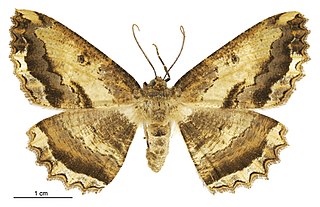
Gellonia dejectaria, the brown evening moth, is a species of moth in the family Geometridae. The species was first described by Francis Walker in 1860. It is endemic to New Zealand.

Deana is a monotypic moth genus of the family Crambidae described by Arthur Gardiner Butler in 1859. It contains only one species, Deana hybreasalis, which is endemic to New Zealand.

Maoricrambus is a genus of moths of the family Crambidae. It contains only one species, Maoricrambus oncobolus, which is endemic to New Zealand. This species is classified as Nationally Endangered by the Department of Conservation.
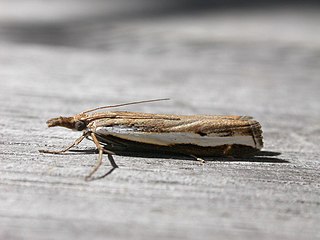
Orocrambus is a genus of moths of the family Crambidae. All species are endemic to New Zealand.

Pseudocoremia fenerata is a moth of the family Geometridae. It is endemic to New Zealand.
Stigmella maoriella is a species of moth in the family Nepticulidae. It is endemic to New Zealand. It is classified as Not Threatened by the Department of Conservation.

Eudonia bisinualis is a species of moth in the family Crambidae. It was described by George Vernon Hudson in 1928. This species is endemic to New Zealand.

Meterana pascoei is a moth in the family Noctuidae, endemic to New Zealand. The name and description were published as Morrisonia pascoei by William George Howes in 1912. It is about 38 mm long, with reddish-brown forewings marked with faint lines and a pair of kidney-shaped marks, and a reddish-brown abdomen with a pronounced tuft at the end. Howes named the species in honour of Merlin O. Pasco of Queenstown, who had sent him 20 specimens caught at a treacle-baited moth trap – Howes had previously collected just two specimens, in 1910.
Scoparia limatula is a species of moth in the family Crambidae. It is endemic in New Zealand.

Pyrgotis plagiatana is a species of moth of the family Tortricidae. It is found in New Zealand.
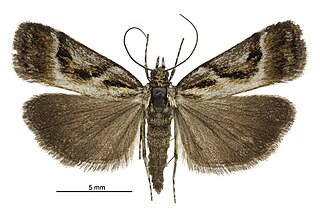
Eudonia hemicycla is a moth in the family Crambidae. It was described by Edward Meyrick in 1884. This species is endemic to New Zealand.
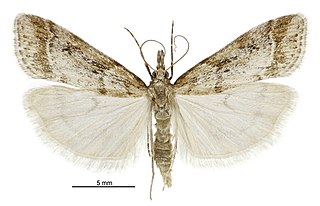
Eudonia chalara is a moth in the family Crambidae. It was described by Edward Meyrick in 1901. It is endemic to New Zealand.
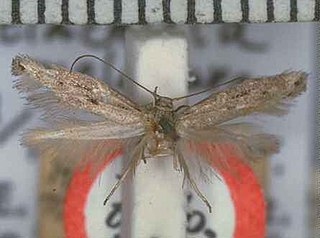
Elachista melanura is a species of moth in the family Elachistidae. This species is endemic to New Zealand. It is classified as "Data Deficient" by the Department of Conservation.

Donacostola notabilis is a species of moth in the family Xyloryctidae, and the only species in the genus Donacostola. The species was described by Alfred Philpott in 1928; the genus established by Edward Meyrick in 1931. The species is endemic to New Zealand.

Jane Taylor is a New Zealand former barrister, chartered accountant and chair of the Board of New Zealand Post. She has held several directorial and board positions across many prominent New Zealand companies.

Sir Robert George Mappin Fenwick was a New Zealand environmentalist, businessman and professional director.

Priscilla M. Wehi is a New Zealand ethnobiologist and conservation biologist. As at July 2021 she is an associate professor at the University of Otago and on the first of that month officially undertook the role of director of Te Pūnaha Matatini, a centre of research excellence in complex systems and data analytics. During the COVID-19 pandemic in New Zealand Te Pūnaha Matatini scientists have developed mathematical models of the spread of the virus across the country that influence the New Zealand government's response to the outbreak. In 2021 Wehi was awarded the Hill Tinsley Medal.

















